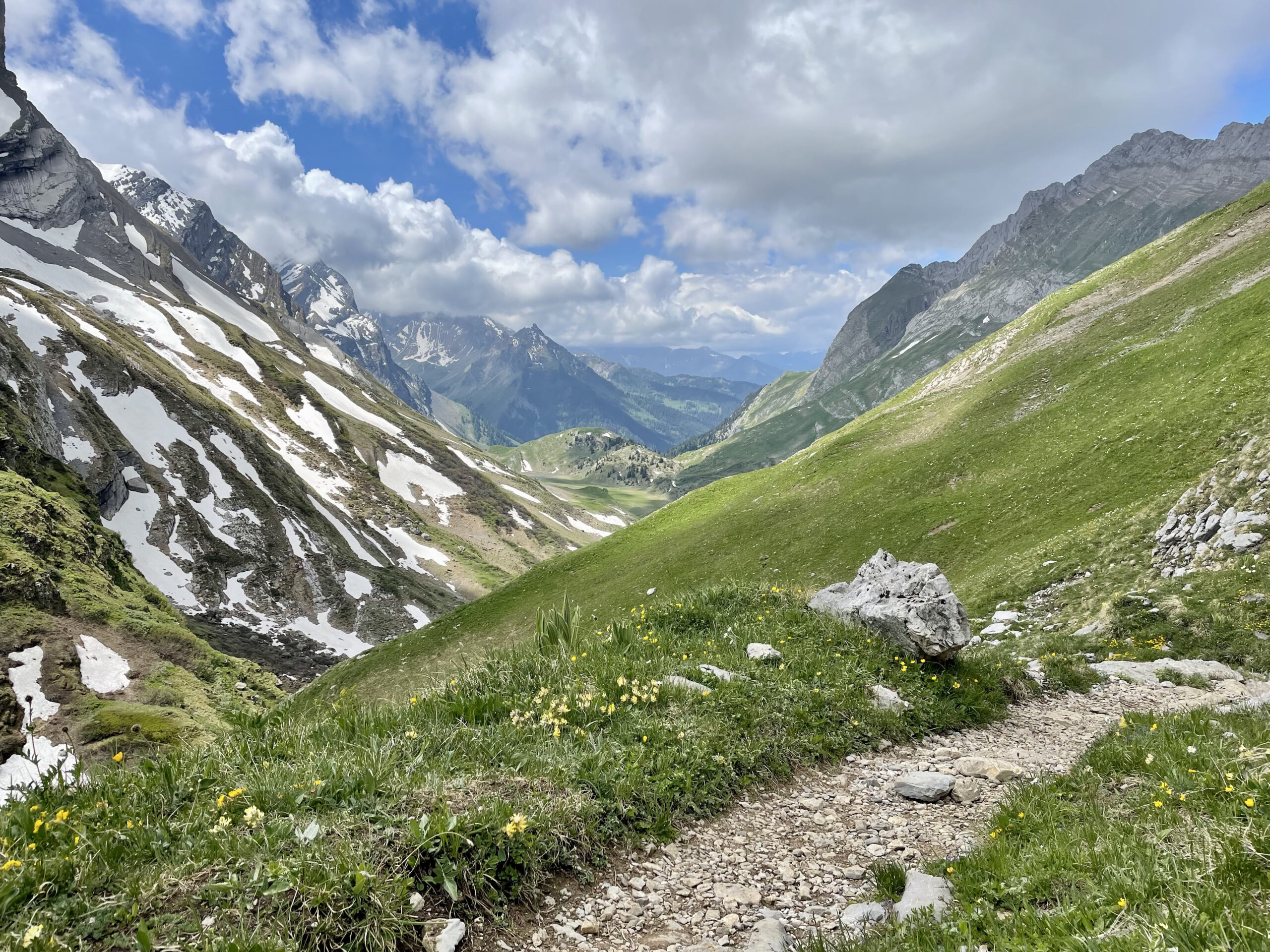Mountain walking presents a unique set of challenges and opportunities for walkers. Unlike flat terrain, the biomechanics of walking in mountainous areas can be significantly affected by the stress of elevation changes, rocky paths, and varying inclines. Understanding these factors and adapting your walking style accordingly can make a substantial difference in your walking experience.

Biomechanics of Mountain Walking
Humans are essentially “rear-wheeled drive animals,” meaning most of our power comes from the large muscle groups in the legs, supported by the core muscles. This power distribution is crucial when walking uphill or downhill. Proper body position is key to efficiently using these muscle groups and maintaining balance and stability.
Importance of Body Position
Body position is crucial for both ascending and descending. A well-balanced stance can prevent falls and injuries while conserving energy. Here are some tips:

Uphill Walking
When ascending, lean slightly into the slope and shorten your stride. Taking huge steps might seem like a good idea, but it’s actually more efficient to break them into smaller, manageable steps. This method eases the load on your muscles and conserves energy. For instance, if you encounter a large step up, look for an intermediate foothold to break the climb into two smaller steps.
Think of it like climbing stairs: closely spaced steps are much easier to manage than large, widely spaced ones. Pay close attention to where you place your feet to ensure each step is stable and secure. Unsteady foot placements can waste energy and make efficient walking more challenging.

Downhill Walking
Descending requires a different technique. The best body position for steep descents is to position your body slightly back knees slightly bent and adopt a stance reminiscent of John Wayne or, for a modern twist, a “pimp swagger.” This posture helps maintain balance and control on steep descents. Ensure that your feet land firmly to avoid slipping and reduce strain on your knees.

Tips for walking on loose Scree and Rocks
Navigating scree or rocky terrain demands a compact, controlled movement. Think of the agility of Gimli and the light steps of Legolas from “The Lord of the Rings.” Keep your body compact and tread lightly to maintain balance and prevent sliding.
An effective exercise to improve your technique is to walk up a slope with your hands behind your back. This forces you to focus on using your legs and feet correctly and emphasises the importance of body position.
The Physiology of Mountain Walking
Walking on flat terrain is relatively easy and does not significantly elevate your heart rate. However, climbing uphill is a different story. The effort required to lift your body weight against gravity with each step makes it comparable to resistance training.
For those who only walk occasionally, this can be particularly challenging. The steep climbs and the added weight of a backpack can push your heart rate to levels similar to running.
Improving Your Mountain Walking Fitness
If you find walking up hills difficult, there are ways to improve:
Regular Training: Incorporate incline walking or stair climbing into your regular exercise routine to build strength and endurance.
Strength Training: Focus on exercises that strengthen your legs and core, such as squats and lunges.
Practice on Hills: The more you practice walking on inclines, the more your body will adapt, making future hikes more manageable.
Go out with an experienced hill walker and watch how they move or hire a mountain leader
Conclusion
Mastering the techniques of mountain walking can greatly enhance your experience on the hill, making it more enjoyable and less strenuous. By understanding the biomechanics of walking and applying these tips, you can tackle any mountain with confidence and efficiency. Remember, the key is in the details – body position, stride length, and where you place your feet all play a vital role in how effectively you navigate the terrain. Happy walking!
Discover more from The Mountain Trod
Subscribe to get the latest posts sent to your email.


